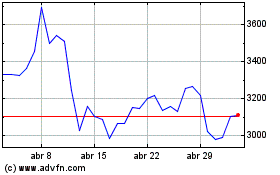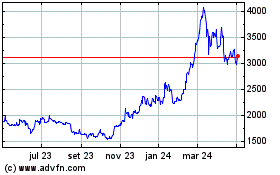Is An Energy-Efficient PoW-Based Blockchain Possible?
05 Outubro 2021 - 4:22AM
NEWSBTC
The emergence of cryptocurrency has disrupted the traditional
financial industry and captivated the world while doing so. The
decentralization movement does not only prevent fraud, but for
those living under authoritarian governments, it can provide a
medium of exchange resistant to censorship, giving a crucial means
of financial freedom. Although cryptocurrency has been lauded for
its technological advancements, it hasn’t come without its moments
of scrutiny. In May, Elon Musk decided to stop accepting Bitcoin as
payment for Tesla, tweeting that he was concerned about the
“rapidly increasing use of fossil fuels for bitcoin mining.” This
is because the top cryptocurrencies—including Bitcoin, Bitcoin
Cash, and Ethereum—require large amounts of energy consumption to
function. In 2020, a report showed that Bitcoin was on track to use
more energy than that of 159 countries combined. It’s no wonder
that people like Musk are advocating for greener alternatives.
Despite the fact that most new technology comes with trade-offs,
the issue has sparked a conversation about how blockchains can
further move towards environmentally friendly practices. This is
where Proof-of-Work (PoW) or Proof-of-Stake (PoS) gets interesting
regarding the environmental impact of a blockchain. Both PoW and
PoS algorithms can have a direct effect on energy usage. However,
PoW is typically known to require a more significant amount of
energy since miners need to sell their coins to pay their bills.
PoW was created as the original consensus algorithm for blockchain
and is used to confirm transactions and add new blocks to the chain
for data storage. Alternatively, PoS works off the percentage of
coins held by a miner. Cryptocurrencies have adopted it to maximize
energy efficiency because it usually has significantly lower
consumption levels since miners aren’t required to solve complex
mathematical problems, like in PoW blockchains. For this reason,
PoS has been the default choice for the majority of newer
blockchains. With that being said, the argument that PoW-driven
blockchains are unable to provide mining solutions that are energy
efficient is not entirely accurate. With advances in scalability,
new PoW technology has emerged that allows this form of mining to
be as environmentally friendly and secure as PoS. Though PoS
blockchains might appear to be better for the environment on the
surface, upon closer inspection, they pose multiple problems due to
their lack of scalability. On the other hand, while PoW-based
blockchains appear to use more power initially, they can also very
much have the potential to be greener and more secure than
PoS-based blockchains. During the blockchain boom, while most
players in the industry opted for the promises PoS mechanisms
offered of high energy efficiency, one organization, Kadena,
focused its efforts on scalability and dedicated its time to
building a more robust underlying blockchain solution. While
blockchains using PoS argue that PoW isn’t sustainable, the most
critical factor contributing to PoW’s energy efficiency is the
transactions per second (TPS). Kadena claims it has the capability
to push up to 100,000 TPS, which will be confirmed in testing later
this year. This will not only be a groundbreaking speed but also
make it the only scalable PoW blockchain to exist. Compared to PoS,
which can sometimes only achieve 10 TPS, this is a much faster and
environmentally friendly protocol. Many PoS systems that had high
hopes for PoS solving surface-level problems are now faltering.
This week, Solana crashed under high demand, Arbitrum was taken
offline, and Ethereum was attacked. As the flaws in the PoS-based
blockchains begin to be exposed and the need for a more sustainable
solution becomes increasingly pressing, Kadena, the only sharded
and scalable layer-1 PoW public network offer a robust solution to
the masses. Learn more about how this leading blockchain is
disrupting the DeFi space on Kadena’s website.
Ethereum (COIN:ETHUSD)
Gráfico Histórico do Ativo
De Jan 2025 até Fev 2025

Ethereum (COIN:ETHUSD)
Gráfico Histórico do Ativo
De Fev 2024 até Fev 2025
